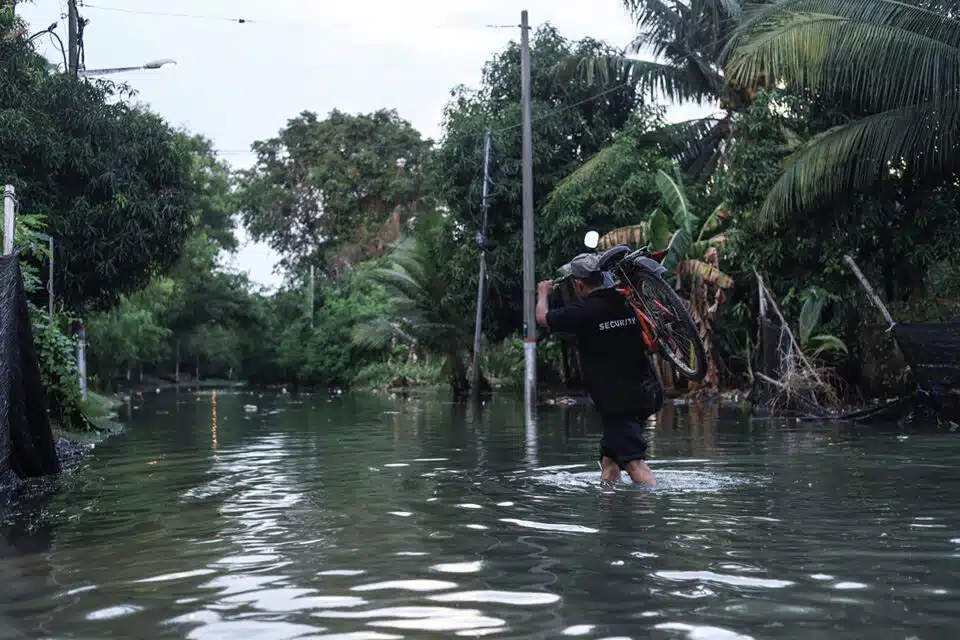KUANTAN, Oct 24 — The upward trend in dengue cases, which often occurs after floodwaters recede, calls for residents, especially those living in flood-prone areas, to take precautionary measures and carry out cleaning efforts as soon as possible.
Experts interviewed by Bernama said the trend should not be taken lightly, as records showed an increase in female Aedes mosquito bites a week after floodwaters receded.
The Health Ministry (MOH) earlier raised concern about the rise in dengue cases during flood season. It also reminded residents in affected areas to be more vigilant against the spread of mosquito-borne viral diseases.
Public health expert from the Faculty of Medicine, Universiti Kebangsaan Malaysia (UKM), Prof Dr Rozita Hod said high-risk groups such as the elderly, pregnant women, and those with chronic illnesses are more vulnerable to dengue due to their weakened immune systems.
“If we look at the recent floods in mid-October in Temerloh, affected areas were mostly in rural villages where most of the population are elderly individuals whose immune systems are weaker. This is compounded by pre-existing conditions such as high blood pressure, heart disease, and diabetes.
“At their age, organs are no longer functioning at an optimal level, especially if there are complications from diseases like high blood pressure or diabetes. That said, dengue is dangerous for everyone, especially if it leads to severe cases like dengue hemorrhagic fever,” she added.
The Temerloh district was inundated on October 13, with 10 temporary evacuation centres (PPS) operating, sheltering 1,859 victims from 556 families. Affected areas had fully recovered by Sunday (October 20).
The urgency for immediate cleaning is warranted, as media reports earlier quoted Pahang Health Director Datuk Dr Rusdi Abdul Rahman as saying that Pahang is currently ranked second-highest in Malaysia for dengue deaths.
A total of 1,409 dengue cases, with five deaths as of September 28, were recorded by the Pahang Health Department (JKNP) in Bentong, Bera, Kuantan, Raub and Rompin, with victims aged between 40 and 65.
In this regard, Dr Rozita said there is still a lack of awareness about the increased risk of contracting dengue after floodwaters recede, as many people assume that Aedes mosquitoes, which carry the DEN-1, DEN-2, DEN-3, and DEN-4 viruses, only breed in clean, stagnant water.
“It is true that floodwaters are usually muddy, and Aedes mosquitoes don’t breed in dirty areas. However, don’t forget that the increased rainfall during this time can also contribute to a rise in the mosquito population.
“The current erratic weather pattern, hot and rainy in some areas due to the transition of the Northeast Monsoon, increases the risk of Aedes mosquito breeding. Food containers and rambutan skin can also collect rainwater, creating breeding grounds for Aedes mosquitoes,” she explained.
According to the Malaysian Meteorological Department (METMalaysia), Temerloh is one of the areas experiencing a Level One heatwave (caution) alongside Larut, Matang and Kuala Kangsar in Perak; Gombak and Petaling in Selangor; the Federal Territory of Putrajaya; and Maran in Pahang.
Elaborating further, Dr Rozita said previous studies have shown that polystyrene food containers are among the most common breeding grounds for mosquito larvae, and it takes only a week for larvae to mature into adult mosquitoes.
“Cleaning efforts cannot be delayed because a single female Aedes mosquito carrying the dengue virus can lay hundreds of eggs. The cleaning process cannot just involve making sure one’s own home is clean, as it requires a commitment from the entire community.
“This is because a single Aedes mosquito can fly up to 200 meters, which is why when there’s a dengue case in an area, health workers will carry out fogging within a 200-meter radius from the patient’s home,” she said.
At the same time, she stressed that the public should be aware that fogging only kills adult mosquitoes and not their eggs, which is why it is crucial to clean the home and surrounding areas.
The same concern was voiced by Pahang Solid Waste and Public Cleansing Management Corporation (SWCorp) director Sharudin Hamid, who said that his agency was also collaborating with various agencies and non-governmental organisations (NGOs) to manage flood waste.
“We are working with relevant parties to help flood victims, especially with the cleanup in front of their homes to avoid prolonged exposure to the risks of contracting dengue, water-borne diseases such as typhoid, cholera, and leptospirosis, as well as the appearance of wild animals.
“In this latest flood incident in Temerloh, the amount of waste is quite significant, as many were unprepared. Floods usually happen in the area from late November to December. The most common items discarded this time were household furniture such as mattresses and electrical appliances,” he said.
A total of 35.38 tonnes of flood waste from Kampung Batu Kapor and Kampung Sungai Buloh in Temerloh have been cleared and taken to the landfill, with cleaning efforts now 70 per cent complete and expected to be finished in the next two days.
— Bernama





